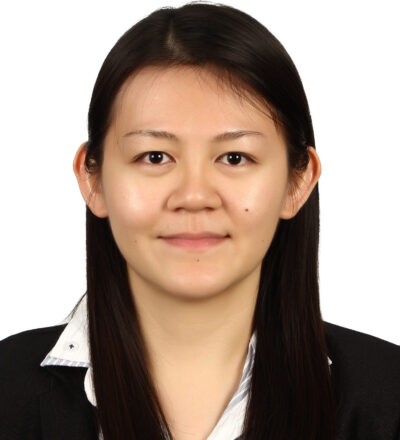My name is Chin Yin Leo. I hold a bachelor’s degree in Chemical Engineering from the University of Malaysia. In the last year of my studies, I started working on a project that explored the physico-chemical characterizations of new ionic liquids. The results of this project were published in the Journal of Molecular Liquids.
After graduation, I joined a multinational, Alfa Laval Sdn Bhd (Malaysia), as a project engineer, and served as project manager on a number of projects in life sciences, focusing on heat-exchanger technology. But I was also able to get involved in the detailed engineering of the heat-transfer systems these projects used.
Overcoming hurdles
These projects were interesting and we made considerable progress, but they also faced limitations, of course. One area in which I thought I could help overcome these hurdles had to do with membrane technologies. And it was that interest that set me on the exciting path I’m still on today.
To develop my expertise in membrane technologies, I decided in 2018 to apply to the Erasmus Mundus European Master’s in Membrane Engineering for a Sustainable World, an “advanced educational programme related to membrane science and engineering at the interface between material science and chemical engineering and focused on specific applicative fields.” I was really pleased not only to be accepted but to get a full scholarship.
Travel galore
But there were other benefits to the programme: as part of it, I also got to travel rather a lot in Europe. Thus in September 2018, I went to the University of Montpellier in France, where I did my first semester. Then for the second, it was on to the University of Chemistry and Technology in Prague. And finally, for the second year of the programme, I decided to come to the University of Twente here in the Netherlands, where I focused on energy and the environment: after a practicum related to the synthesis and characterization of zeolite and silica membranes for CO2/CH4 separation, I joined the Inorganic Membrane research group to complete my MSc thesis.
My idea was to extend my knowledge in the field of inorganic and hybrid membrane for liquid filtration application. Thus my thesis, which was on the development of a ceramic-supported 2D nanosheet membrane for organic solvent nanofiltration, pointed the way to the development of a new class of solvent-resistant nanofiltration membranes consisting of two-dimensional (2D) nanomaterials that possess enhanced chemical and thermal stability in harsh industrial conditions.
Theory and practice
It was during my work with the Inorganic Membrane group that I learned about the PoSiMem project. A key aim of the project is to develop robust, reproducible, and easy-to-scale-up approaches to the production of novel nanofiltration membranes composed of periodic organosilica networks and hexagonal nanochannels. Moreover, the membranes the project is proposing to develop could potentially have important industrial applications, so I was immediately hooked. While the science is really interesting, it’s the practical applicability that’s key: enhancing circularity and reducing environmental impacts is something I’m keenly interested in. So I’m really please to be able to contribute to this important work.
Up to the challenge
Over the next four years, then, I’ll be working to develop novel nanofiltration membranes that are composed of periodic organosilica layers with 2D/3D hexagonal and tunable nanochannels. I will also be exploring the possibilities of tuning the diameter of the pores (between 0.8 and 2.0 nm) through the use of new co-structure directing agents. And along the way I hope to gain more-fundamental insights into the routes by which membranes are now synthesized, as well as into the mechanisms by which they are formed, as well as into how disordered porous membranes can be turned into ordered periodic systems to recover organic solvents at high temperatures.
While I’m at it, I would like to learn more about preparing and characterizing periodic organosilica membranes for organic solvent nanofiltration applications under harsh or extreme conditions, and about how to test the performance of the membranes.
I’m personally inspired by the prospect of taking on new challenges and tackling new problems, especially if that can yield social or environmental benefits. The work ISPT is doing in promoting technology that supports sustainability is promising on both counts, as it works to create a circular and carbon-neutral process industry in 2050. So I’m really pleased to be able to do my part by contributing to this project.
The fact is, industry doesn’t have a lot of choice when it comes to membranes that can be used for solvent-resistant nanofiltration, and the performance of those that are out there leaves a lot to be desired whether we’re talking about solvent permeance, solute rejection, or durability. So the project certainly has its work cut out for it—but I know we’re up to the challenge.
Acknowledgement
The PoSiMem project is supported by the Open Technology Programme through project number OTP 18475 by the Dutch Research Council, NWO domain AES.
